Picture this: You’ve got something important on your mind that you really need to discuss with your boss, a colleague, or even a family member. But here’s the catch – you don’t want to just barge in and start yakking away without making sure they’re actually available to chat. I mean, come on, nobody likes to be ambushed with a serious convo when they’re knee-deep in a project or trying to scarf down their lunch, am I right?
So, what’s a person to do in this situation? You guessed it – you need to find a polite, professional way to ask if it’s a good time to talk. Sounds simple enough, but sometimes it can feel a bit awkward or intimidating, especially if you’re about to discuss a sensitive subject or talk to someone in a position of authority.
But fear not, my friend! I’ve got your back. In this article, we’ll dive into 20 formal ways you can inquire about someone’s availability for a conversation, complete with sample responses to help you navigate these tricky waters like a pro. We’ll cover everything from the classic “Do you have a moment?” to more fine approaches that show you respect the other person’s time and priorities.
When A Quick Check-In Makes Sense?
Now, you might be thinking, “Do I really need to ask every time I want to chat with someone?” Of course not! For quick questions, casual check-ins, or urgent updates, you can usually dive right in. Save the formal lead-in for times when:
- You need to discuss something important or delicate
- The conversation may take more than a few minutes
- You’re not sure what the other person is currently doing
- You know they’re extremely busy or stressed at the moment
- It’s early morning, late night, or an unusual time to contact them
When in doubt, it never hurts to ask. Now, on to those handy phrases!
1. “Do you have a few minutes to chat?”
This one’s a tried and true classic. It’s simple, straightforward, and gets the point across without being too demanding. Here’s how it might play out:
You: “Hey Amanda, do you have a few minutes to chat about the upcoming project deadline?”
Amanda: “Sure thing, John! I’ve got about 10 minutes before my next meeting. What’s up?”
2. “Is this a convenient time to discuss [topic]?”
When you’ve got a specific topic in mind, this is a great way to give the other person a heads up and make sure they’re prepared to dive in.
You: “Hi Mr. Johnson, is this a convenient time to discuss the budget proposal for next quarter?”
Mr. Johnson: “Actually, Jake, I’m just heading into a conference call. Could we touch base later this afternoon around 3 PM?”
3. “I was hoping to talk to you about [issue]. When would be a good time for you?”
This approach shows that you respect the other person’s time and want to find a slot that works best for their schedule. It’s a win-win!
You: “Good morning, Sarah! I was hoping to talk to you about the recent changes to our team’s workflow. When would be a good time for you?”
Sarah: “Hi there! I appreciate you checking in first. How about tomorrow morning at 9 AM? I’ll be at my desk and ready to focus on this.”
4. “I have a question about [topic]. Do you have a moment, or should I come back later?”
Sometimes you just need a quick answer or clarification. This phrasing gives the other person an easy out if they’re not available, without making it awkward.
You: “Hey Mike, I have a question about the new software update. Do you have a moment, or should I come back later?”
Mike: “I’ve got a couple of minutes now, shoot! If it’s something more involved, let’s set up a dedicated meeting.”
5. “I don’t mean to interrupt, but could I speak with you briefly about [issue] when you have a chance?”
If you see that the other person is engrossed in a task or conversation, this is a polite way to signal that you need their attention without being too intrusive.
You: “Excuse me, Dr. Thompson, I don’t mean to interrupt, but could I speak with you briefly about my research proposal when you have a chance?”
Dr. Thompson: “No problem, Emily. Give me 15 minutes to wrap up this email, and then I’m all yours!”
6. “Do you have time for a quick discussion about [topic] today or tomorrow?”
This question gives the other person some flexibility in terms of timing while still conveying a sense of urgency or importance.
You: “Hi Alex, do you have time for a quick discussion about the client pitch today or tomorrow? I have some ideas I’d like to run by you.”
Alex: “Good thinking, Jen! Let’s aim for tomorrow morning if that works for you. My schedule is pretty packed today.”
7. “If you’re not too busy, I’d love to get your input on [issue]. Is there a good time for us to connect?”
Asking for someone’s input or advice is a great way to show that you value their perspective and expertise. This phrasing is both respectful and collaborative.
You: “Hey Priya, if you’re not too busy, I’d love to get your input on the new marketing strategy. Is there a good time for us to connect?”
Priya: “Absolutely, David! I’m always happy to help. Let’s find a time that works for both of us – how’s Thursday afternoon looking for you?”
8. “I know you’re swamped, but could we set aside a few minutes to go over [topic] when your schedule allows?”
Acknowledging that the other person has a lot on their plate shows empathy and consideration. This approach is great for those times when you need to discuss something important but don’t want to add undue stress.
You: “Hey boss, I know you’re swamped with the end-of-quarter reports, but could we set aside a few minutes to go over my performance review when your schedule allows?”
Boss: “No worries, Rachel! I appreciate you being mindful of my workload. Let’s plan for early next week – things should be calmer by then.”
9. “I’ve got some updates on [project]. Would you prefer to discuss them now or schedule a meeting for later?”
When you have progress or news to share, giving the other person options shows that you’re flexible and willing to work around their preferences.
You: “Hi Liam, I’ve got some updates on the website redesign. Would you prefer to discuss them now or schedule a meeting for later?”
Liam: “Ooh, I’m excited to hear what you’ve got! If the updates are quick, let’s chat now. If it’s more involved, let’s book a meeting so we can really dig in.”
10. “Is it alright if we take a few minutes to talk about [issue]? I want to make sure I’m on the right track.”
Framing the conversation as a way to ensure you’re aligned and heading in the right direction can make it feel more collaborative and less daunting.
You: “Hey Simone, is it alright if we take a few minutes to talk about the new client onboarding process? I want to make sure I’m on the right track.”
Simone: “Definitely, Amir! It’s always better to double-check and get clarification. Let’s huddle up and make sure we’re on the same page.”
11. “I’d like to get your thoughts on [topic]. Is there a convenient time for a quick chat?”
Similar to asking for input or advice, this phrasing emphasizes the value of the other person’s perspective and expertise.
You: “Hi Olivia, I’d like to get your thoughts on the proposed changes to our employee benefits package. Is there a convenient time for a quick chat?”
Olivia: “Sure thing, Ethan! I’m happy to share my insights. How about we grab a coffee tomorrow afternoon and go over it together?”
12. “I have a few questions about [project]. Would you mind if I run them by you when you have a moment?”
This approach is perfect for those times when you need clarification or guidance on a specific aspect of your work.
You: “Hey Marcus, I have a few questions about the new CRM system. Would you mind if I run them by you when you have a moment?”
Marcus: “Not at all, Sophia! I’m here to help. Let’s find a time later today to sit down and go through your questions one by one.”
13. “I’ve been working on [task] and could use your feedback. Is there a good time to discuss it?”
Asking for feedback shows that you value the other person’s opinion and want to improve your work.
You: “Hi Naomi, I’ve been working on the draft for the annual report and could use your feedback. Is there a good time to discuss it?”
Naomi: “Absolutely, Isaac! I’m glad you’re seeking feedback. Let’s schedule a meeting for tomorrow afternoon so I can review the draft and provide my thoughts.”
14. “I’d like to touch base with you about [issue]. Would you prefer to chat in person or over the phone?”
Offering different communication options shows that you’re willing to accommodate the other person’s preferences and makes the conversation feel more accessible.
You: “Hey Caleb, I’d like to touch base with you about the upcoming conference. Would you prefer to chat in person or over the phone?”
Caleb: “Hi Mia! Let’s do a phone call – that way, we can discuss it while I’m on my way to the office. How’s 8:30 AM tomorrow?”
15. “I have some ideas about [project] that I’d love to share with you. When would be a good time to discuss them?”
Expressing enthusiasm and a desire to contribute can make the conversation feel more positive and collaborative.
You: “Hi Avery, I have some ideas about the new product launch that I’d love to share with you. When would be a good time to discuss them?”
Avery: “That’s great, Lucas! I’m always eager to hear fresh perspectives. Let’s set up a brainstorming session later this week to go over your ideas.”
16. “I wanted to follow up with you about [topic]. Is this a good time, or should we schedule something for later?”
Following up on a previous conversation or issue shows that you’re proactive and committed to resolving things in a timely manner.
You: “Hi Emma, I wanted to follow up with you about the budget revisions we discussed last week. Is this a good time, or should we schedule something for later?”
Emma: “Thanks for following up, Noah! I appreciate your diligence. Let’s schedule a meeting for early next week so we can review the updated numbers together.”
17. “I’d like to discuss [issue] with you and get your guidance. When would be a convenient time for you?”
Asking for guidance demonstrates humility and a willingness to learn from others’ expertise.
You: “Hi Lila, I’d like to discuss the challenges we’re facing with the new software implementation and get your guidance. When would be a convenient time for you?”
Lila: “Of course, Elijah! I’m happy to provide my insights and support. Let’s find a time next week to sit down and strategize together.”
18. “I’ve been thinking about [topic] and would value your perspective. Can we find a time to chat?”
Valuing someone’s perspective shows respect for their knowledge and experience, making the conversation feel more meaningful.
You: “Hey Zoe, I’ve been thinking about ways to improve our team’s communication and would value your perspective. Can we find a time to chat?”
Zoe: “Definitely, Jackson! I’m glad you’re thinking about this important topic. Let’s compare notes and see if we can come up with some actionable ideas.”
19. “I have a bit of a dilemma with [issue] and could really use your advice. Is there a good time for us to talk it through?”
Admitting that you’re facing a dilemma and seeking advice shows vulnerability and trust in the other person’s judgment.
You: “Hi Oliver, I have a bit of a dilemma with the client proposal and could really use your advice. Is there a good time for us to talk it through?”
Oliver: “Absolutely, Aria! I’m here to help in any way I can. Let’s find a quiet spot this afternoon to discuss your concerns and come up with a plan.”
20. “I want to make sure we’re on the same page about [topic]. Can we touch base when you’re available?”
Ensuring that you’re aligned with others is crucial for effective collaboration and communication.
You: “Hey Lily, I want to make sure we’re on the same page about the new project timeline. Can we touch base when you’re available?”
Lily: “Great idea, Sebastian! It’s always better to double-check and ensure we’re in sync. How about we grab a few minutes after the team meeting tomorrow?”
Graceful Ways To Say “Now’s Not A Good Time”
Of course, sometimes the timing just isn’t right for a chat. If someone asks to talk and you’re slammed, it’s perfectly acceptable to say “Sorry, now’s not a good time.” Be polite but direct:
- “I apologize, but I’m in the middle of [task] at the moment. Could we chat [later/tomorrow/next week] instead?”
- “Thanks for checking in! I’m a bit swamped right now, but I’d be happy discuss this [alternative time]. Does that work for you?”
- “I really want to give this conversation my full attention, but I’m currently [busy/in a meeting/on a deadline]. Could I get back to you [later/tomorrow/next week]?”
The key is to acknowledge their request, give a brief reason why you’re not available, and propose an alternate time to talk. That way, you’re still being responsive and responsible.
Tips For Having Difficult Conversations
Some discussions are tougher than others. Whether you’re giving constructive criticism, disagreeing with a decision, or broaching a sensitive subject, these tips will help the conversation go smoothly:
- Plan ahead. Outline your key points and think through potential responses/reactions.
- Choose a private, comfortable location. Difficult discussions are best had one-on-one in a quiet place.
- Be direct but tactful. Beating around the bush only prolongs the discomfort.
- Listen actively. Give the other person a chance to share their thoughts without interrupting.
- Focus on facts and behaviors, not character. Avoid accusations or generalizations.
- Propose solutions. Don’t just point out problems—offer ideas for moving forward.
- Follow up. Check in to see how they’re feeling and thank them for hearing you out.
Remember, facing an awkward issue head-on with maturity and respect is always better than letting resentment simmer. You’ve got this!
Conclusion
And there you have it, folks – 20 formal ways to ask if it’s a good time to talk, complete with sample responses to help you navigate those potentially awkward conversations with ease. Remember, the key is to be polite, respectful, and mindful of the other person’s time and priorities.
By using these phrases and adapting them to your specific situation, you’ll be able to initiate important discussions while maintaining a professional and considerate tone. So go forth and communicate with confidence, knowing that you’ve got the tools to approach any conversation with grace and tact!
And hey, if all else fails, just remember – a friendly smile and a genuine “How are you doing today?” can go a long way in breaking the ice and setting the stage for a productive chat. Happy talking!


